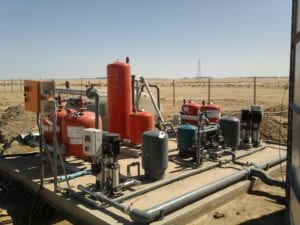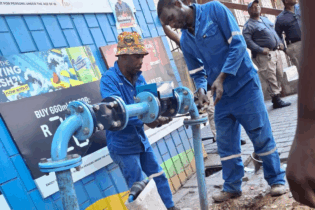The semi-arid and barren climate across Southern Africa has created a unique demand for a new and innovative approach to water supply that’s capable of indefinitely sustaining remote populations living near mines or away from municipal water sources.
Aqua Services and Engineering (ASE) has answered this need with a series of water and wastewater treatment systems that turn wastewater into a resource – freeing up unused water to be distributed to where it is most needed. The company’s flagship trickling filter technology is well under way to becoming the leading solution to wastewater treatment in the region. Regarded as one of ASE’s most innovative projects on the continent, a trickling filter plant was installed to treat wastewater from a mine camp at African Barrick Gold’s North Mara Gold Mine in Tarime, northern Tanzania. “New-generation, fixed-film trickling filter technology allows for far more robust operation in the harsh sub-Saharan environment and produces a final effluent that complies with stringent environmental specifications,” says Christian Stöck, MD at ASE. “New advancements mean that water quality and production rates are kept consistent, fewer skilled operators are required and operation is automated to a point of being almost foolproof.” These plants are available in containerised units of varying sizes, almost on a ‘plug-and-play’ basis, making them ideal for remote locations such as mine or military camps. They are easy to install and maintain, and can be used in parallel to cope with increases in demand. They are also highly mobile and can be moved to new sites if needed.“Once commissioned, trickling filter plants require only the service of submersible pumps as the system features few moving parts. Our systems come standard with duty and standby pumps,” says Stöck.
“The plants we have already commissioned upgrade domestic wastewater for reuse in dust suppression, process water for mining, or for irrigating gardens and lawns,” he says.
Other projects where ASE has proven its capabilities include the flagship sewage-to-potable water plant, the Goreangab Water Reclamation Plant in Windhoek, operated by WINGOC, of which Veolia Water is also a major shareholder. WINGOC has been operating this plant successfully since 2002. “It is still the only direct reuse plant in the world and serves as a prime example for solving sub-Saharan Africa’s complex potable water problems in arid regions,” says Stöck. Contracted by the Namibian Department of Agriculture, Water & Forestry to produce potable water from river water, the Katima Mulilo Filtration Plant Upgrade, set to be commissioned in 2013, will eventually replace the old Namwater filtration plant and will supply 530 m3/h of potable water into the Caprivi pipe system. In 2011, a pumping station was commissioned in Mupini, 20 km west of Rundu, which now pumps 4 800 m3/h of river water from the Kavango River to the Sikondo irrigation bulk water supply project. “The construction involved building a foundation below the river’s water level. This was achieved by constructing a coffer dam inside the Kavango River, to cast the foundation on the solid bedrock of the river bank,” maintains Stöck.







